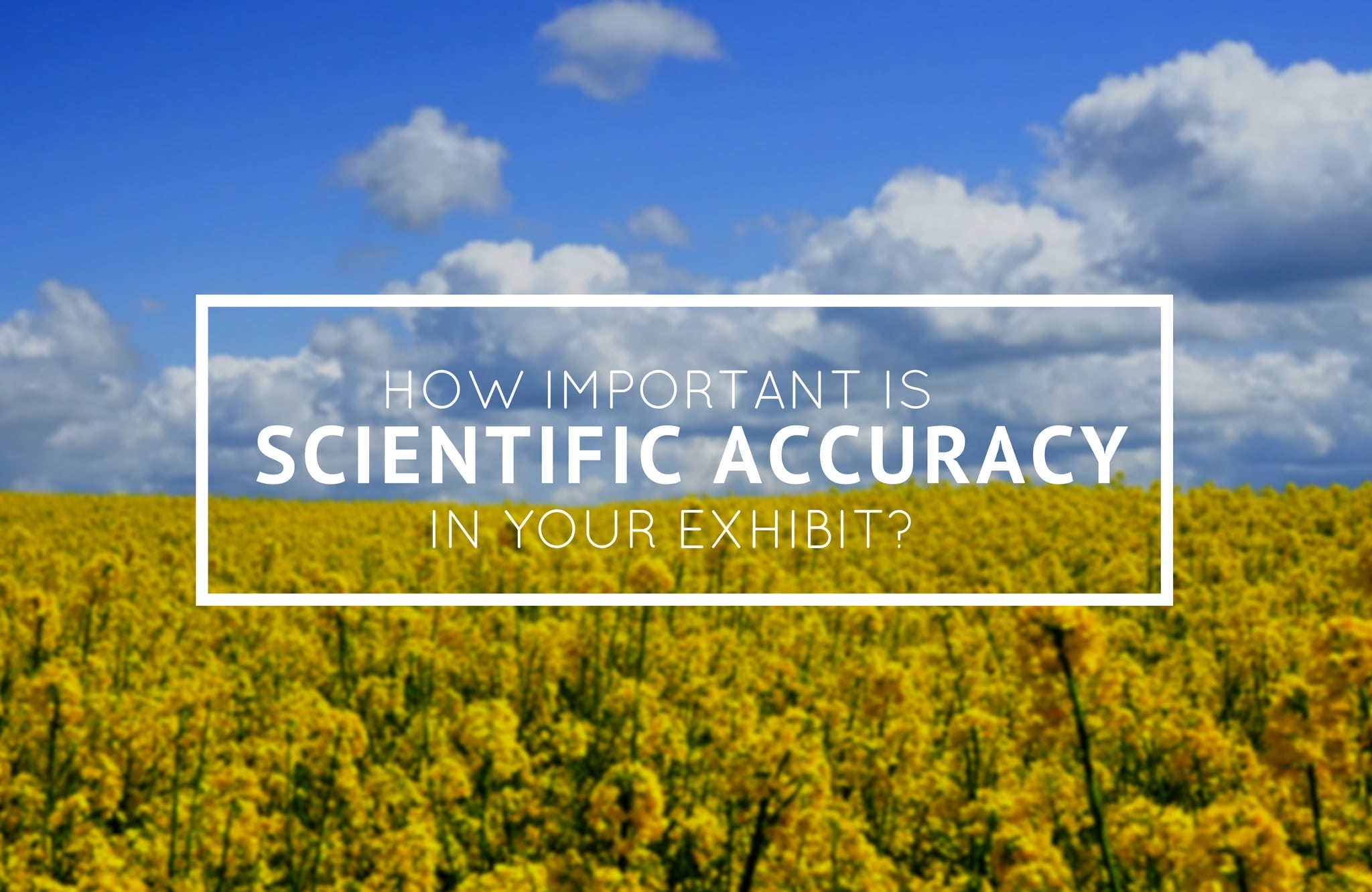How Important is Scientific Accuracy in Your Exhibits?
Thursday, August 25, 2016 3:19 PM by Taylor Studios in Design and Planning

Find a comfortable chair in a quiet spot. Sit with your feet on the floor and your hands resting comfortably in your lap. Close your eyes, take a few deep breathes and clear your mind of all thought. Mentally place yourself on a busy city street with foot, bicycle and motor traffic filling the roadway and sidewalks, not a tree or flower to be seen, the sky a distant blue speck between buildings that crowd it out. Wait! That’s not right, is it? Close my eyes – I can’t see what might hit me! Take a few deep breaths – of polluted air? Clear my mind – my senses are overloaded with frenetic activity, unpleasant odors, and obnoxiously loud noises! No thank you!
I’ll take nature instead, please. Nature that offers a limitless combination of colors, sights, sounds, smells, and movement dependent only on geographic location and perhaps, time of day or year. Nature that soothes, calms, invigorates, awes, and provides a sense of wonder. Nature that seems to have a cosmic ability to effortlessly bestow mental, physical, and spiritual benefits on us humans.
A substantial portion of the exhibits that Taylor Studios designs and fabricates are centered on natural history. Our goal for each exhibit is to create an experience that will inspire people and, while the subject matter is defined by our client, we actively think about how to teach the subject matter to their target audience. While we may not directly teach in terms of choosing the subject, we are certainly “the book that the teacher uses”, explains Shawn, Structures Department Lead.
Both Shawn and Marc, Models Department Lead, agree that information in that book should be accurate and that they approach the fabrication of each exhibit component with scientific accuracy as their starting point. Dirt, rocks, native animals, and plants vary greatly by geographic location and environmental characteristics. References for fabrication purposes are searched by scientific name and regional differences within one species can be seen.
Shawn and Marc emphasize that while they “never make it wrong”, the amount of scientific detail shown in a component is usually a function of the client’s target audience and/or budget. Marc explains, “If a client has 3000 square feet to fill, they often will try to replicate the feel of the (geographic) area so that the exhibit is part scenic set dressing and part scientific accuracy. Where that split falls is a function of their budget and who they are trying to reach.”
Well placed scientific accuracy can hugely influence a client’s success. While a scientifically accurate goldenrod plant model may not add value for a 3rd grader, including a scientifically accurate model of a sub-species of goldenrod discovered in the client’s own region may add impact to the exhibit and help separate the client in the marketplace. Marc should know; the botanist that discovered the Shorts Goldenrod, and wrote a book about it, attended a Taylor Studios design meeting as an advisor to our client. He was there to evaluate Marc’s sample model for accuracy. No pressure, huh? One of Shawn’s memorable accuracy reviews was during a client shop floor visit for a project that included several bird models of varying species. A visiting ornithologist helped Shawn understand the complex measurement details in his reference material. Once Shawn learned the correct start and end points for measuring the bird’s size, he was able to downsize his original model to reflect the bird’s true size.
An accurate model of Shorts Goldenrod and a right-sized bird model are just two of the pages in the book that Taylor Studios is fabricating to help teach about nature through our client’s exhibits. We have a lot more pages to fill! What would you like to learn?
Share this on social networks